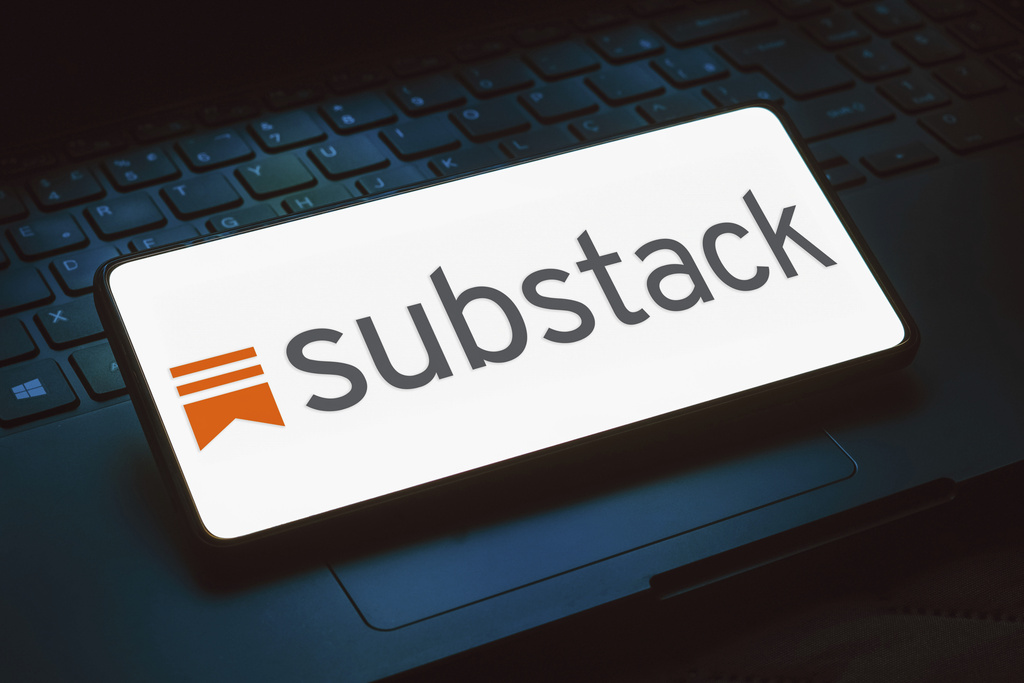The Fifth Estate: The New Economics of Journalism

Photo by Rafael Henrique / SOPA Images/Sipa via AP
Something curious happened while we were mourning journalism’s decline: it was quietly reinventing itself. Not through grand reforms or billion-dollar bailouts, nor through scribes deciding to all just “pivot to video,” but through the slow, almost invisible coalescing of individuals. What first looked like atomization — countless isolated voices scattering across the digital plain — is now beginning to resemble the early formation of something else: a lighter, more nimble kind of institution.
For years, the story of journalism was told as tragedy. Once-majestic news organizations — Hearst, Gannett, McClatchy, and indeed my own Associated Press — declined steadily, bled dry by digital disruption and managerial hubris. Their demise was taken as proof that the public no longer cared for serious reporting, that the algorithm had conquered reason. But perhaps the rot ran deeper. Perhaps these empires fell not only to technological change but to their own bulk — to inefficiency, middle-management bloat, and a certain exhaustion.
The collapse, viewed differently, might not have been a death so much as a clearing: a way for something smaller, truer, to grow.
When social media first became the global public square, its promise was intoxicating. Anyone could publish, anyone could be heard. The result, inevitably, was cacophony: a million cat photos, duck faces, and screaming polemics. We were, as a society, probably unprepared for the democratization of attention. The first wave of the creator economy produced visibility but not necessarily value.
Yet beneath the noise, the tools matured. Platforms emerged that were not built for virality but for connection — platforms like Substack, Patreon, Medium, Beehive, and also, obviously, YouTube. In some cases, the business model was quietly radical: Substack in particular reshaped the economics of journalism by aligning the interests of creators and platform. It takes ten percent of subscription revenue — and nothing else. If a writer earns nothing, neither does Substack.
That simple inversion — the platform serving the writer rather than the other way around — changed everything. Suddenly, journalists could publish without the machinery of editors, HR departments, or ad sales teams. They could charge directly, experiment with paywalls, own their audience lists. The barrier between writer and reader, long mediated by corporate brand, dissolved.
The numbers tell their own story. Substack’s annual cut of $45 million implies some $450 million flowing to writers. That would be, sadly enough, about the same as the current revenue of the AP. Forty-five publications now make more than $1 million a year; the top ten, together, clear $25 million. Paul Krugman alone, with half a million subscribers, might earn $1.5 million if only a fraction choose to pay. He was a big reason I read the New York Times; the paper’s hubristic editors needed him more than he needed them, and didn’t know it.
Moreover, these are not just new revenue streams; they are new social structures. Each newsletter, podcast, and independent media site is a node — small, self-contained, but increasingly connected to others. Collaboration has emerged not as a nicety but as the logic of survival. Writers cross-post, co-edit, co-host, and co-promote. Audiences overlap, intertwine.
From this tangle of micro-enterprises, new formations are taking shape. They are not corporations, nor in most cases quite collectives. They are federations — emergent newsrooms built from the bottom up, held together by trust, shared ethics, and the recognition that credibility now moves horizontally, not vertically.
Consider The Free Press, born when Bari Weiss left (again) The New York Times in 2021. It began as a simple Substack and soon grew into a multi-writer operation — podcasts, essays, a staff of editors — before becoming a destination website being sold this year to Paramount for a reported $150 million. It is both the story of a rebellion and of a return: an independent voice becoming, once again, an institution. But this time, a leaner one.
Or consider the countless smaller federations: writers who pool subscribers, share revenue, and lend one another credibility. My own publication, Ask Questions Later, began as one mainstream media refugee’s dispatches and now resembles a small international desk — contributors scattered across Europe and the Middle East and beyond, some paid, others volunteering, all bound by a sense of shared mission. Collaborations with other Substacks — Blue Amp, The Cosmopolitan Globalist, Worth Knowing — allow us to co-produce podcasts, exchange articles, cross-pollinate audiences. It is not an organization in any formal sense. But in practice, it behaves like one.
This is the paradox of the moment: from the atomization of media, institutions are forming again — smaller, faster, ethically grounded, and reader-owned. They operate without the bureaucratic drag that crippled legacy outlets, yet they still value the things that made those outlets noble in their prime: editorial standards, verification, the moral duty to inform. This last aspect will undoubtedly grow, in time – and the consumers will migrate. Indeed, while legacy outlets report declines in traffic (driven also by ChatGPT) — Forbes down 52%, CNN down 34%, Fox News down 25% — Substack’s grew 47% year over year in 2025. Revenue follows attention, and attention increasingly resides in the hands of individual creators and small networks rather than corporate brands. This is redefining the media economy.
In a sense, journalism has returned to its artisanal roots. The industrial model — vast newsrooms, advertising departments, global syndicates — is giving way to something more like a guild system: a constellation of skilled practitioners bound by craft and conscience. The institution is not dead; it has simply been miniaturized and made more efficient.
And this, perhaps, is the most hopeful development of all. For decades, journalism’s institutions grew distant from both their employees and their audiences. The creators of value — the reporters, photographers, and editors — were reduced to cost centers. Readers became data points. The human scale was lost. In today’s decentralized model, that scale returns. Writers answer directly to readers, not shareholders. Trust is personal, not branded.
The transition is not without risk. Few independent creators can fund a months-long investigation into corporate malfeasance or afford the legal firepower to withstand a libel suit. Fragmentation can lead to gaps in coverage, duplication of effort, and, at times, self-indulgence. Yet collaboration is proving a partial antidote. And there are quiet projects underway to address these challenges.
Across Europe, early experiments anticipated this shift. France’s Mediapart pioneered subscription-driven investigative reporting; Germany’s Krautreporter runs as a cooperative. In Britain, The Rest Is Politics podcast and Charlotte Ivers’s political newsletter attract audiences once reserved for broadcasters. Each embodies the same pattern: autonomy coupled with federation, independence coupled with mutual reinforcement.
Legacy media’s decline, then, may be less a calamity than a correction. The old giants fell not only because the internet undercut their ad revenue, but because they mistook size for strength. They forgot what institutions are for. The new media order — messy, diverse, experimental — is rediscovering it.
It is learning that institutions need not be monoliths. They can be networks. They can be porous, collaborative, distributed. Their legitimacy can derive not from centralized authority but from transparent relationships with readers. And because these new institutions are ground-up, they remain small enough to care about ethics, to remember that journalism’s purpose is not engagement but enlightenment.
Even the broader creator economy points in this direction. YouTube has paid out over $100 billion to creators in the past four years — proof that decentralized production can coexist with enormous scale. Journalism’s equivalent may never be as vast (though part of it, basically talking-head shows and podcasts, can be on YouTube and Spotify), but it can be as vital: a networked economy of trust and storytelling, sustained not by ads but by allegiance.
The grand newsrooms of the twentieth century were products of the industrial age — efficient in their time, but destined for sclerosis. What replaces them will be leaner, federated, built from the bottom up by individuals whose credibility is their brand and whose brand is their bond.
The story of journalism, it turns out, was never one of simple decline. It is a story of recombination, of empires falling so that ecosystems could emerge. Not the end of the Fourth Estate, but an evolution to what you might call the Fifth.
Dan Perry is the former London-based Europe/Africa editor and Cairo-based Middle East editor of the Associated Press, the former chairman of the Foreign Press Association in Jerusalem, and the author of two books. He is a widely published columnist and TV commentator. Follow him at danperry.substack.com.
This is an opinion piece. The views expressed in this article are those of just the author.




